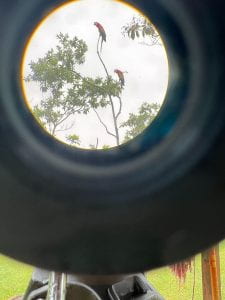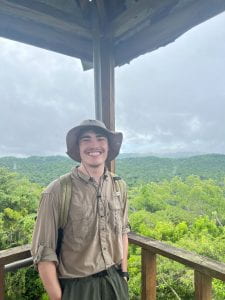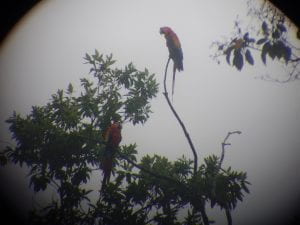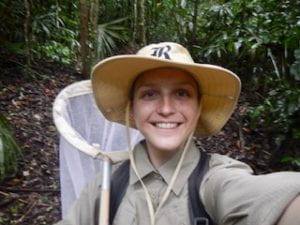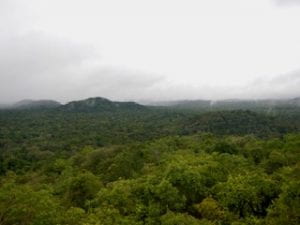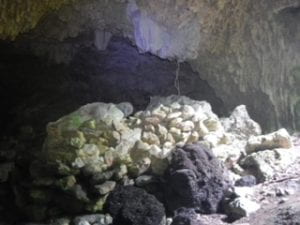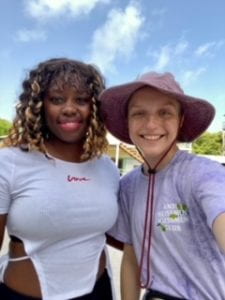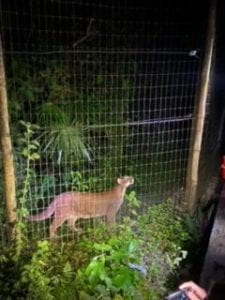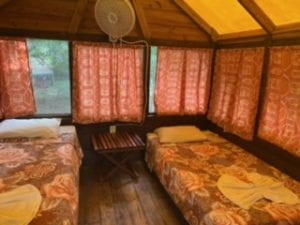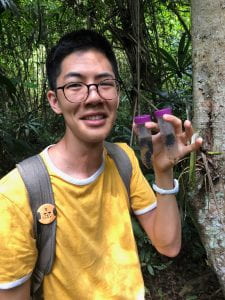We were on top of the world (a hilltop in the Maya Mountains). We lay in peace and gratitude on the wooden platform at the top of the bird tower, enjoying the breeze, watching the sun rays overcome the clouds, and listening to the chorus of bird calls. Out of the blue, we heard the buzzing of a bee growing louder and chuckled – even at the highest point we could reach, without a flower in sight, the bees get fomo and want to get in on the drama (or create it).
(On Top of the World – 06/23/25)
Today was our jungle wrap-up day ;,<. After a morning watching the sunrise at the top of bird tower, we trudged around collecting our motion sensor cameras and pointing out different species we spotted, appreciating the beauty we’d learned to see in the last week.
During our descent up the steep steep hill in the morning, we stopped to catch our breath and a few termites to munch on (they taste like carrots!). A little while down the path, we spotted a shriveled frog in the middle of the trail. Because these guys breathe through their skin and need water to stay moist, they’re especially vulnerable to drought and don’t fare well during Belize’s dry season (December-May). We also saw a rare red brocket deer, I guess early birds get to see the most organisms. And later on in the day, 2 pairs of scarlet macaws flew overhead and an agouti popped its head out in the distance to wish us goodbye as we dangled our feet off the wooden deck and blogged. Just as we’re getting to know the forest, it’s getting to know us.
To wrap up our week, we had a class watch party to sort through all of the pictures collected by the motion sensor camera. Though my camera took more pictures moving around inside my backpack on the way back than of organisms, our class’s cameras caught 3 pumas, many curassows (a pheasant-like bird), and a wild Sam strolling by, with the heaviest traffic actually being on human-disturbed paths rather than undisturbed jungle vegetation. Looks like no one here was taking the path less traveled, and I can’t blame them. We’ve tripped on floor vines and roots a few too many times.
(Puma Spotting – 05/23/25)
We celebrated the completion of our last project with a little campfire, feeling comfortable and laughing about all of the ecology inside jokes and memories we shared. As I made my way back to the cabins, I said goodbye to all of the epiphytes I saw (the giant Philodendron sagittifolium leaves collaring the trees) and filled the final page of my jungle field notebook, feeling a quiet sense of completion. I’m ready to step into the next timeless chapter of this trip: Glover’s Reef.
(Campfire Close – 05/23/25)
Peace,
Lily 🙂







